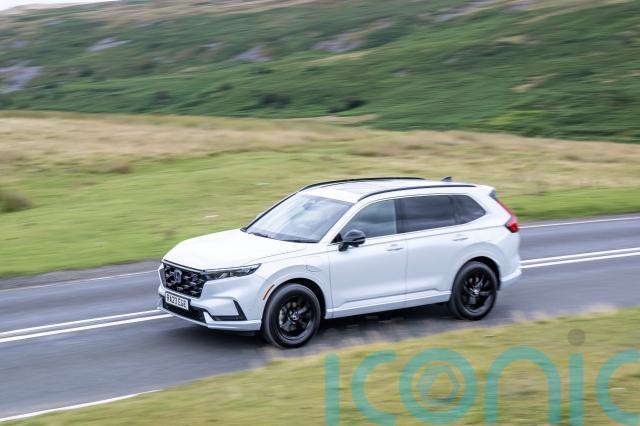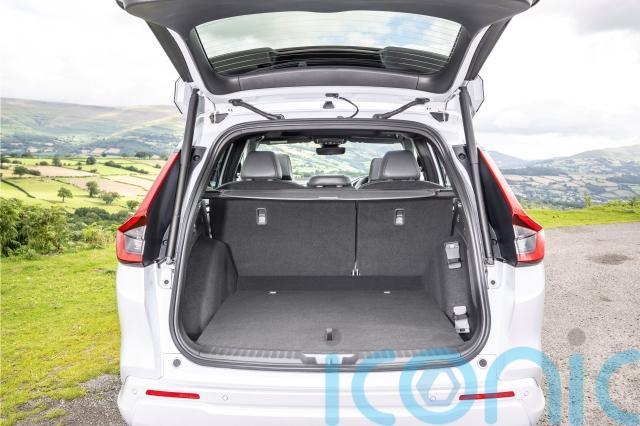

While there have been plenty of newcomers to the family SUV segment of late, Honda isn’t one of them. In fact, its lineage for this car – the CR-V – stretches back to the 1990s, with that original model arriving as a more road-focused SUV that doubled down on family-friendly practicality and accessibility.
You’d expect many of those original traits to be pulled through to this latest model, which arrives with hybrid powertrains and plenty of equipment. But is that the case? We’ve been driving the CR-V to find out.

This sixth-generation car was introduced back in 2023, but continues to be a mainstay of the Honda range. As we’ve come to expect from this brand, Honda has delivered the CR-V with a bit of longevity in mind, which is why the looks, interior and engines feel just as relevant today as they did when the car first launched.
Though a variety of rivals remain in the way of the CR-V’s market dominance – key competitors include Volkswagen’s Tiguan and the Kia Sportage – Honda has equipped it with as much standard equipment as possible to help it keep up.

You can get the CR-V with either a regular ‘self-charging’ hybrid setup or, as is the case for our test car, a plug-in hybrid configuration. It brings together a 2.0-litre petrol engine with an electric motor and battery, bringing 181bhp and 339Nm of torque. Of course, this isn’t a performance-focused model, so the CR-V’s 9.1-second dash from zero to 60mph feels more than adequate for this type of car.
More important is efficiency and with CO2 emissions of just 19g/km, the CR-V PHEV certainly has this box ticked. An electric-only range of 50 miles is impressive, too. Honda claims a combined fuel consumption of 353mpg, but you’d really have to be travelling on electric-only power for nearly all of your driving to get anywhere near this.

The CR-V brings the kind of unflustered, easy-going driving experience that you’d want from a family-focused SUV. It’s not a car to be rushed, that’s for sure, and it really does feel at its best when heading around at slower speeds, where the good electric-only range helps to make this car feel relaxing and quiet. Ask a little more of the powertrain and the engine does get quite vocal, so you tend to avoid harsher uses of the accelerator.
There’s a nice bit of weight to the steering, though and this helps to inspire confidence through the bends. Having around 50 miles of electric-only range also means that you don’t have to call the engine into question all that often and with a 0-100 per cent charge time of two and a half hours when using a home electric wallbox, you don’t have to wait to top it back up again, either.

The CR-V has the chunky, off-road-inspired look that is so popular within the segment at the moment. While there are some elements which feel like they hark back to the original model, it’s an altogether more modern affair. There are some neat styling touches dotted here and there; however, the headlights, which run into the large front grille, are particularly good-looking in our eyes.
You’ve also got six exterior colours to choose from, so there’s some good scope for personalisation should you want it.

It’s a solid, long-lasting impression that you get from the CR-V’s interior. Material quality is largely good, though some of the plastics around the switchgear and lower down the cabin feel a bit low-rent. However, you can’t fault the general layout of the interior and it’s pleasing to see that there are plenty of physical controls for elements such as the heating and ventilation.
Rear-seat space is good, too, and there’s plenty of headroom on offer for those sitting in the back as well. Plus, with the rear seats being on rails, you can slide them forward or back depending on the need for more rear-seat legroom or extra boot space. Speaking of the latter, you’ve got an impressive 615 litres of luggage space to play with and that’s more than you’ll get in the standard hybrid version, too.

Currently, you can only get the CR-V in ‘Advance’ specification, which does bring a huge level of standard equipment to this SUV. Standard kit includes a panoramic sunroof, a powered tailgate and Honda’s Sensing range of safety equipment. The nine-inch infotainment system feels minuscule by rival standards, and though it does get Apple CarPlay and Android Auto included, it’s leagues behind others in terms of overall usability and functions. That said, everything worked just as it should during our time with the car and at least you’ve got physical shortcut buttons to the side.
The real snag is the price. Our test car came in at just £51,000, which feels like a lot of money. Certainly, if you compare one of 2025’s big-hitters in this segment – the £35,165 Jaecoo 7 plug-in hybrid – it does feel like the CR-V is being undercut by many rivals.
The CR-V feels a little old-school in places. Naturally, being introduced back in 2023 means that it’s actually been around for a fair bit without any tweaks, but in some areas, it feels a little older than that. However, with its great electric-only range and impressive line-up of standard equipment, the CR-V does enough to still feel relevant today.
The only issue is this car’s price. At around £50,000, it’s an expensive proposition and with many cars doing more – or the same – for less, it feels as though the CR-V is still struggling to make it to the top.
Subscribe or register today to discover more from DonegalLive.ie
Buy the e-paper of the Donegal Democrat, Donegal People's Press, Donegal Post and Inish Times here for instant access to Donegal's premier news titles.
Keep up with the latest news from Donegal with our daily newsletter featuring the most important stories of the day delivered to your inbox every evening at 5pm.